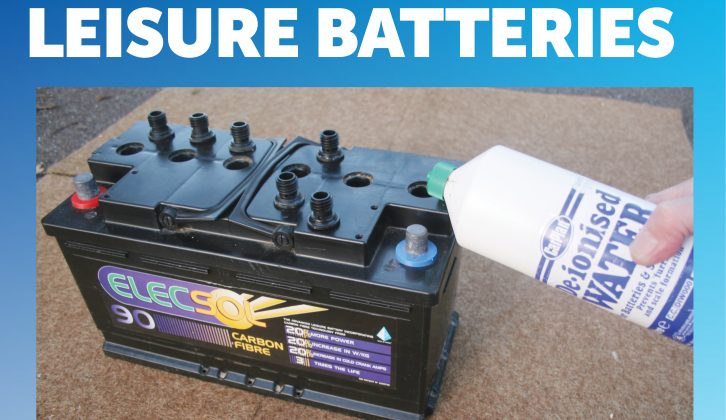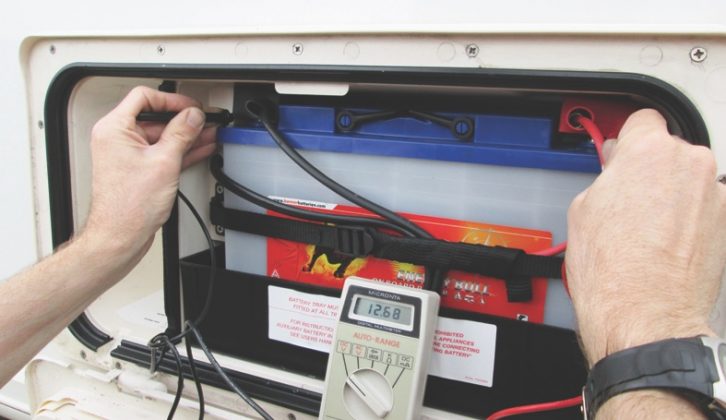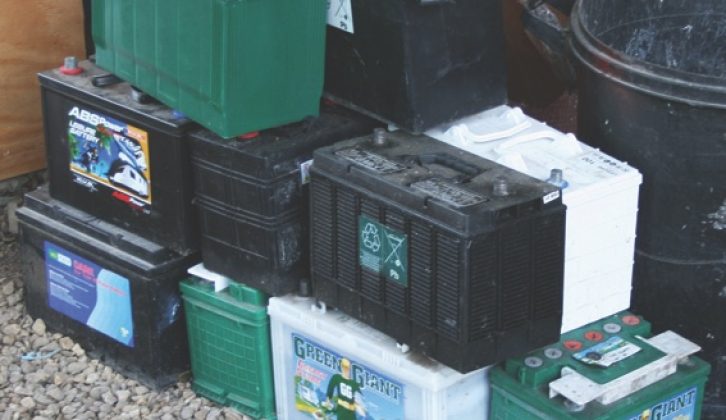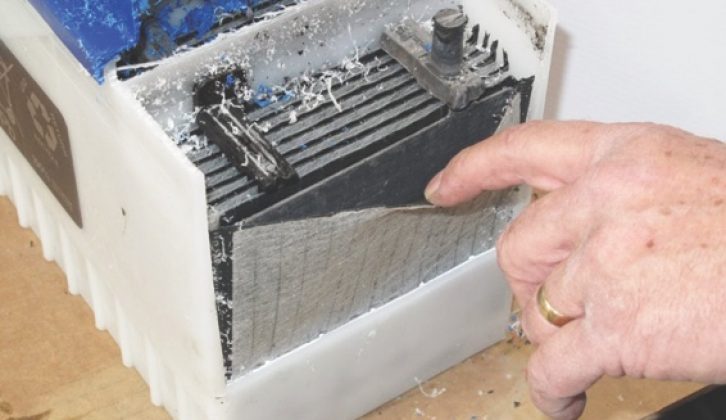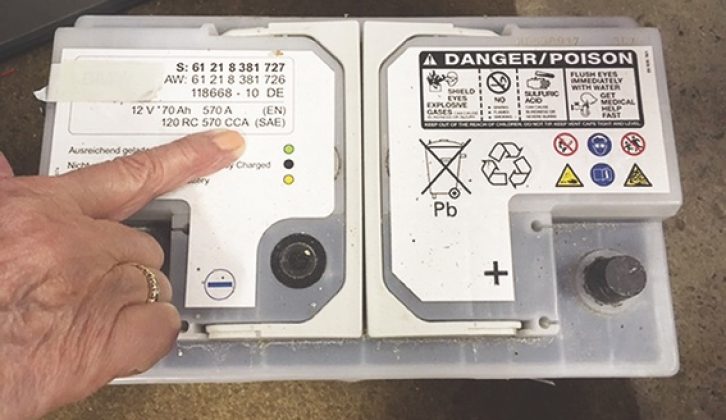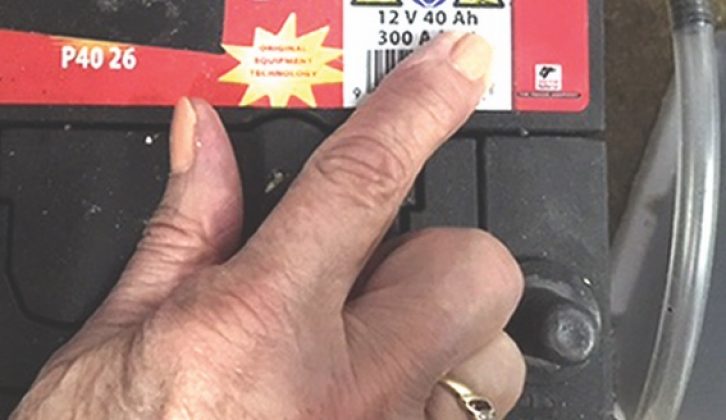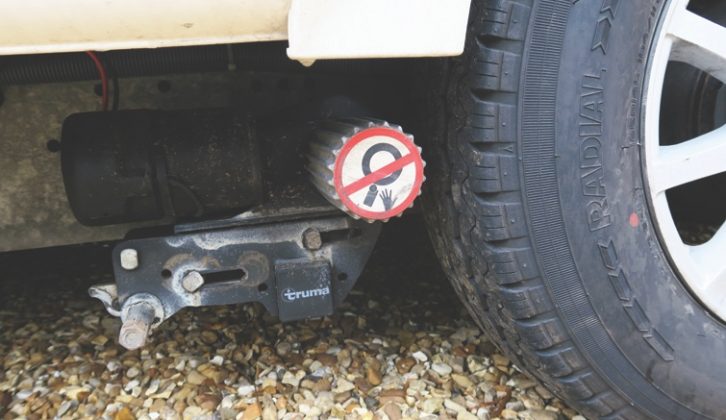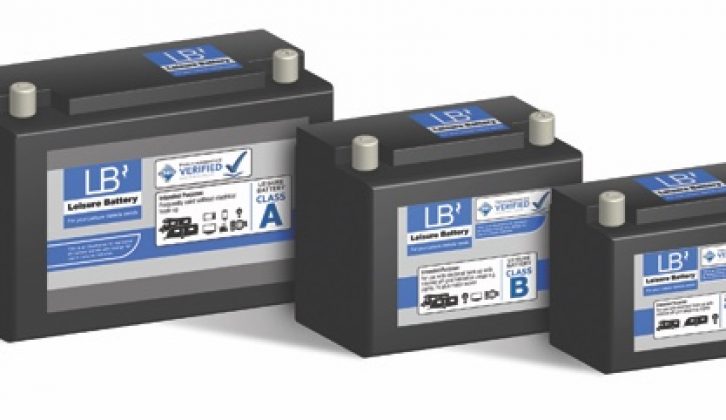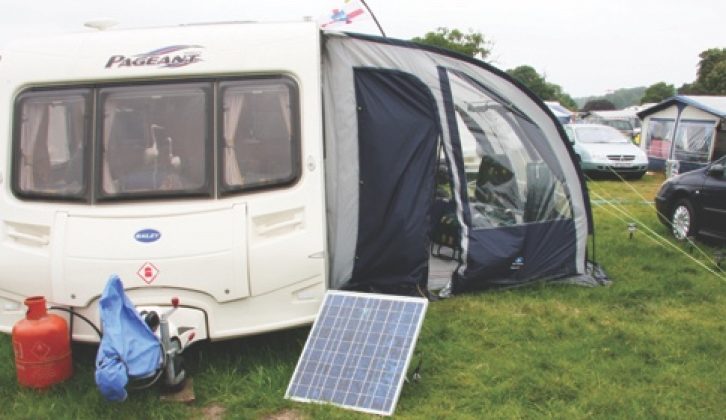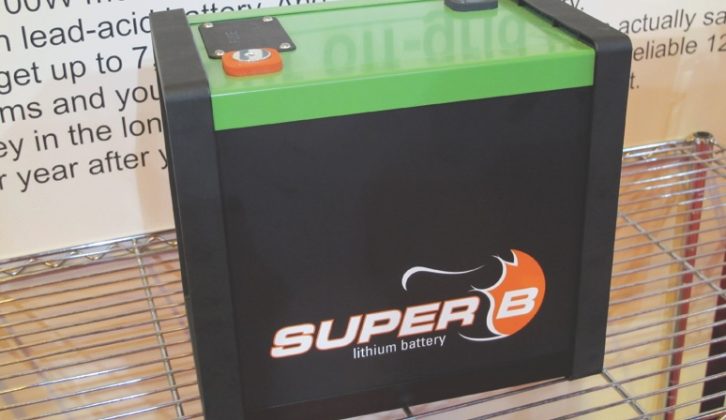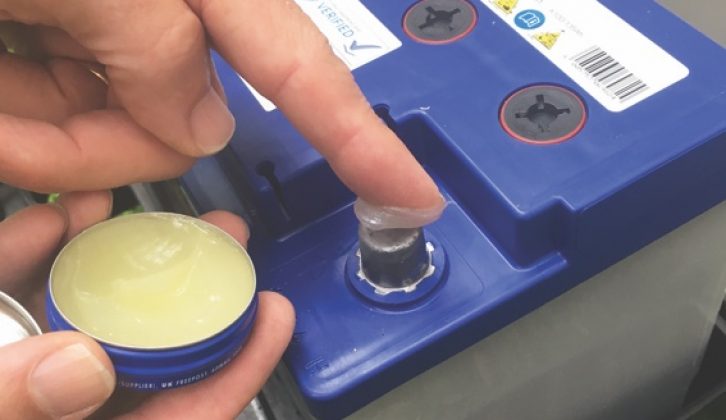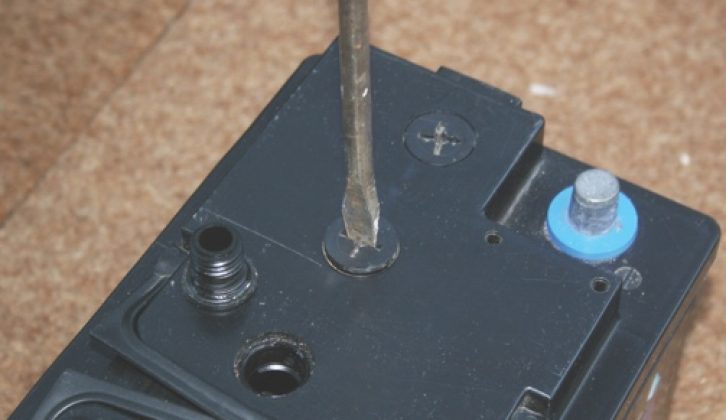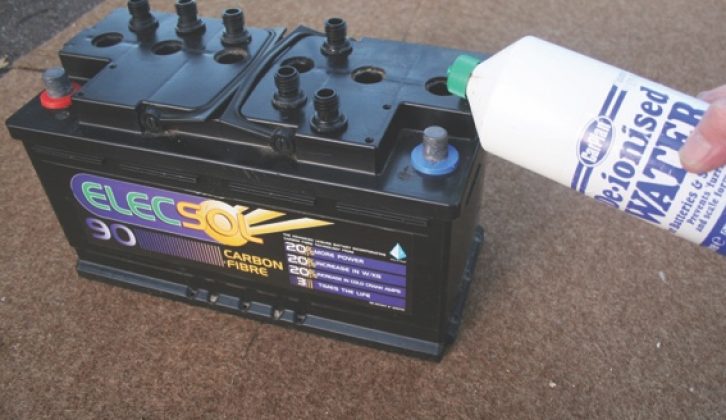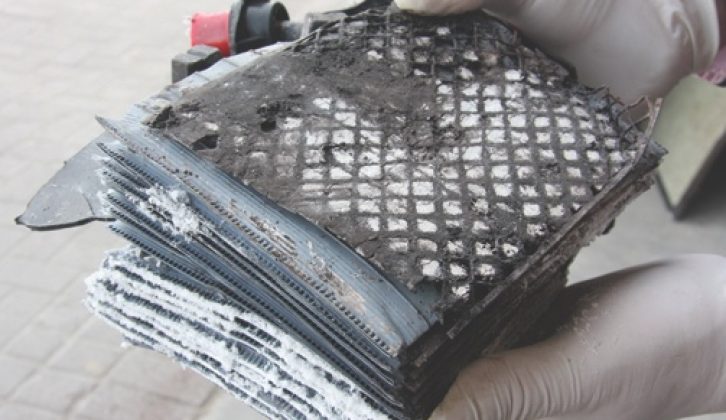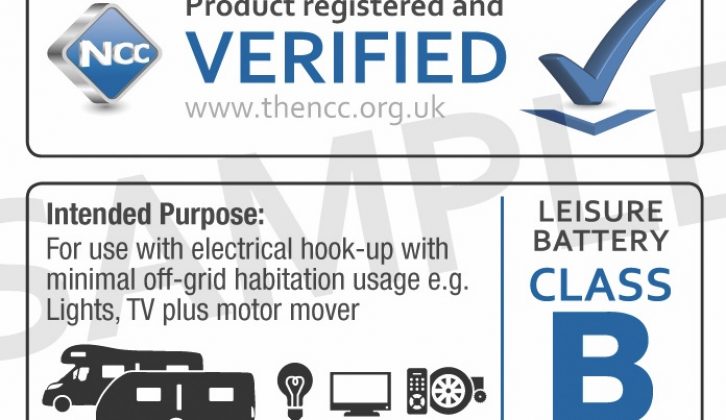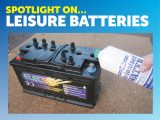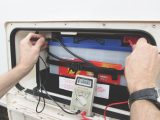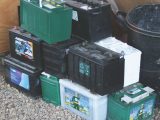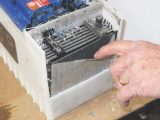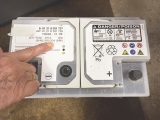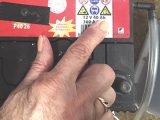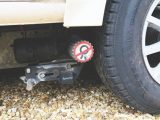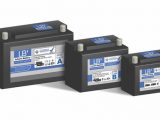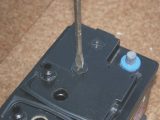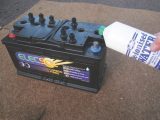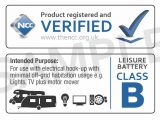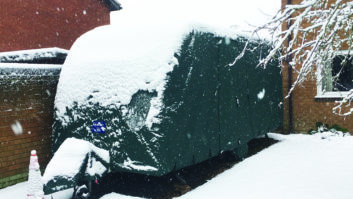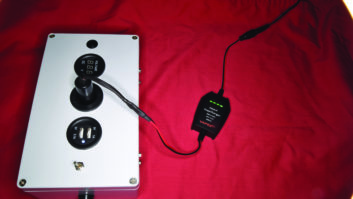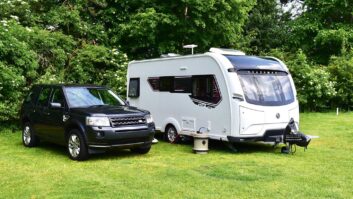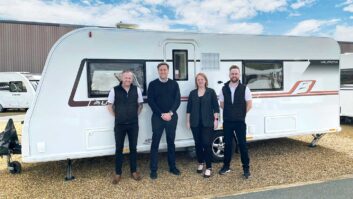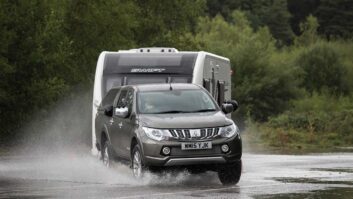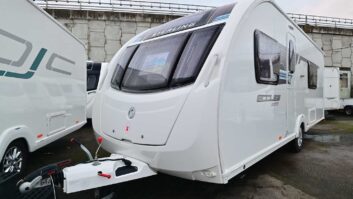Leisure and car batteries look very similar, but they are quite different in terms of performance and how they are manufactured.
A car battery is intended to provide a burst of energy to start the engine, whereas a leisure battery releases a lower level of energy, which is intended to work over a longer period of time.
In addition, once a leisure battery is fully discharged, it cannot be recharged, unlike a car battery.
Another key difference is the size of the plates – starter batteries have numerous thin plates, whereas leisure battery plates are three times thicker and the lead oxide coating is a different formulation.
The plate’s separators, which keep them apart, are similar, but the leisure battery is lined inside with a sheet of fibreglass packing, designed to keep the lead oxide in place when the battery is cycled (discharged).
Starter batteries display the term Cold Cranking Amps (CCA) on their label, a rating used in the industry to define the car battery’s ability to start the engine in low temperatures.
A leisure battery will not show CCA, but will indicate ampere hour (Ah) capacity – it is not intended to be used to start a vehicle.
Why do I need to have a battery in my van?
This might seem to be stating the obvious, but just to clarify, the caravan’s leisure battery carries out two jobs. First, it supplies 12V DC electricity to run your van accessories.
Second, it will smooth out any irregularities in the 12V power produced by a van charger when hooked up to the mains supply.
If your caravan has an alarm, tracker or motor mover, they will all require a substantial power supply in order to work, and this usually comes from the leisure battery.
If you love caravanning in remote locations and choose to go off grid, or you enjoy attending some of the many rallies that take place during the year, it is also important to have a fully charged leisure battery as a power source.
Even if you use a solar panel to produce power, you will still need a leisure battery to store any electricity that is generated in this way.
Leisure battery types
The five main types of battery that are available are as follows:
Open lead acid
This type is known as a wet or flooded battery, and can be accessed for maintenance, which will prolong its life.
Access is usually through screw-in vents, for which special tools should be used to prevent possible damage. These batteries are topped up using de-ionised water.
Sealed lead acid
These are similar to an open battery, except they cannot be accessed for maintenance. As a result, they are often referred to as ‘maintenance-free’ batteries. They aren’t completely sealed, because a vent is provided for gas escape in the side of the lid, and tipping will allow acid to escape.
Absorbent glass mat
This battery is different from open or sealed lead acid types, in that it incorporates an absorbent glass mat (AGM), which is its separator.
AGM batteries look similar on the outside to the flooded battery, but the separators between each plate are fine white fibreglass material, which is similar to blotting paper in that it soaks up and retains the electrolyte (acid). This battery should never be opened.
They have a longer life and better starting performance (ideal for motor movers), and are spill-proof. However, they can be twice the price of a standard wet leisure battery.
Gel
These batteries employ a gel electrolyte and do not need to be kept upright. They are seldom used in the UK and are very expensive (twice the price of an AGM battery).
They have a poor starting performance (for movers), but excellent durability: about twice that of an AGM battery.
Lithium
These batteries are lightweight, compact and very powerful. Some come with Bluetooth, so you can check their status on your smartphone. The claimed performance levels for lithium are excellent, but as they are still relatively new, longevity is as yet unproven. They are also very expensive.
What size do I need?
In order to establish the correct size of battery for your caravan, you need to consider how you intend to use it.
Do you like to go off-grid, or will you always be using mains hook-up? How frequently do you use your caravan?
To put this into context: say you had a 50Ah battery and you found that it lasted for 200 cycles. If you then replaced it with a 100Ah unit, you would expect to get 400 cycles (if you did the same amount of work), but in fact, you are likely to achieve 800 cycles.
The reason is that the cycle depth is much shallower, so life expectancy is considerably longer. Basically, the deeper the discharge, the shorter the life.
NCC Verified Leisure Battery Scheme
There are huge variations in quality, price and performance of leisure batteries, so the NCC introduced a scheme in 2016 to grade them.
The aim of the scheme is to assist consumers in making an informed choice about the type of battery that would best suit their caravanning needs.
The leisure battery is tested to assess its performance and categorised accordingly, into one of three categories.
Category A
These are aimed at people who frequently use their caravan without electrical hook-up.
Category B
Aimed at those who regularly use sites with hook-up, but require greater battery capacity to run a motor mover and so on.
Category C
Aimed at those who will only require basic operation of their habitation equipment for short periods of time away from electrical hook-up.
For further assistance in selecting the right battery for your needs, visit the NCC website.
Maintain your battery in peak performance
The essential point to bear in mind about leisure batteries is not to leave them discharged.
It’s worthwhile investing in a handheld voltmeter to make an accurate analysis of the condition of your battery, because the meters found in some caravans might not be accurate.
A guideline to understanding meter readings is as follows:
Voltmeter reading and approx charge state
- 12.7-12.8V 100%
- 12.5V 75%
- 12.4V 50%
- 12.2V 25%
- 12V or less Discharged
Note that performance between charges will deteriorate as the battery ages, and the colder it is, the harder it has to work.
With a sealed leisure battery, there will be very little in the way of maintenance.
Keep the battery charged, regularly check the state of charge, and clean the terminals and coat them in petroleum jelly or WD-40.
Open batteries will need to be checked at the beginning and the end of the season, to assess their water usage.
To do this, first remove the vents with a special tool, or find a screwdriver with a really wide blade. Be careful not to damage the slots when you do this.
The electrolyte should cover the plates by about 15mm; if it doesn’t, you will need to add de-ionised water to top up.
During winter or long periods of storage, regularly check that the battery is fully charged.
If it’s left to go flat, this will result in a chemical reaction taking place, called sulphating, which is irreversible unless caught early. Even then, this can only be repaired by using specialist equipment.
Final thoughts
Many batteries on the market claim to be leisure batteries, but are in fact starter batteries (used for cars) in disguise. So be careful what you buy online and look for the NCC Verified Leisure Battery Scheme logo, for peace of mind.
The essential point to bear in mind about leisure batteries is not to leave them discharged
